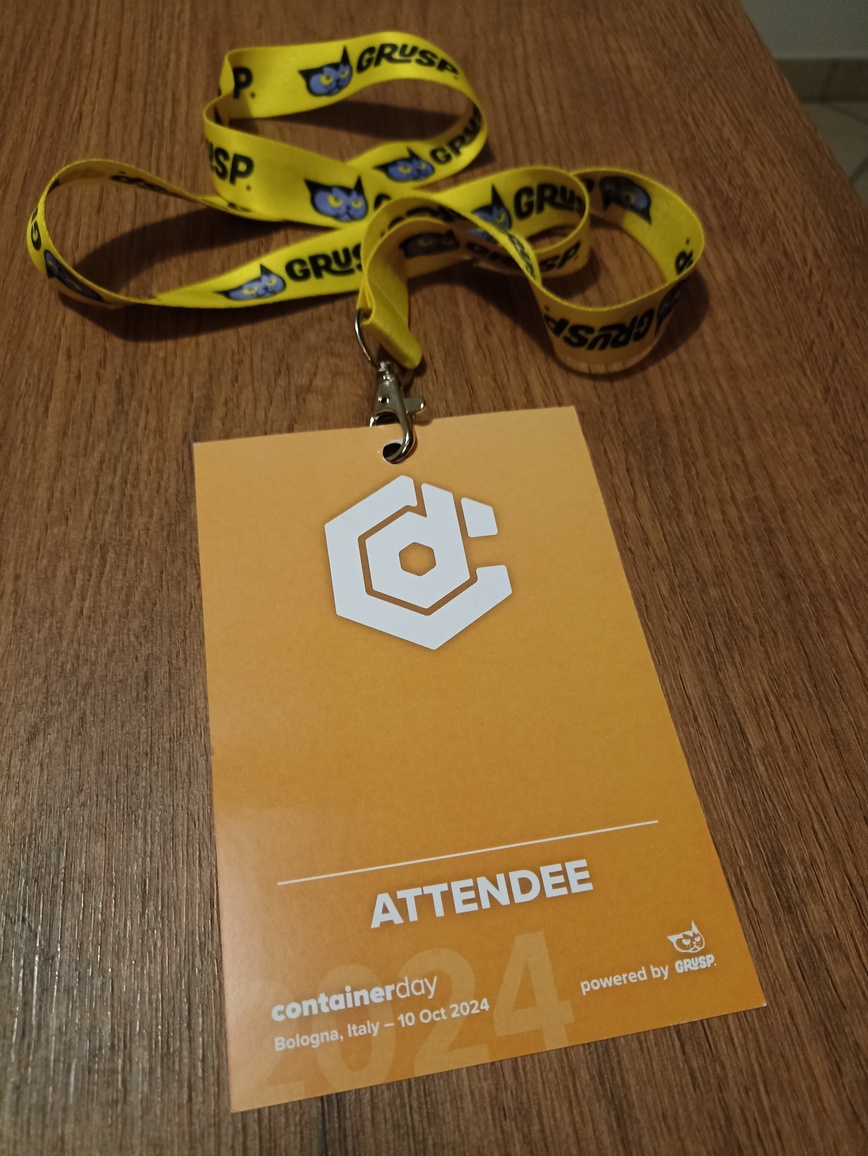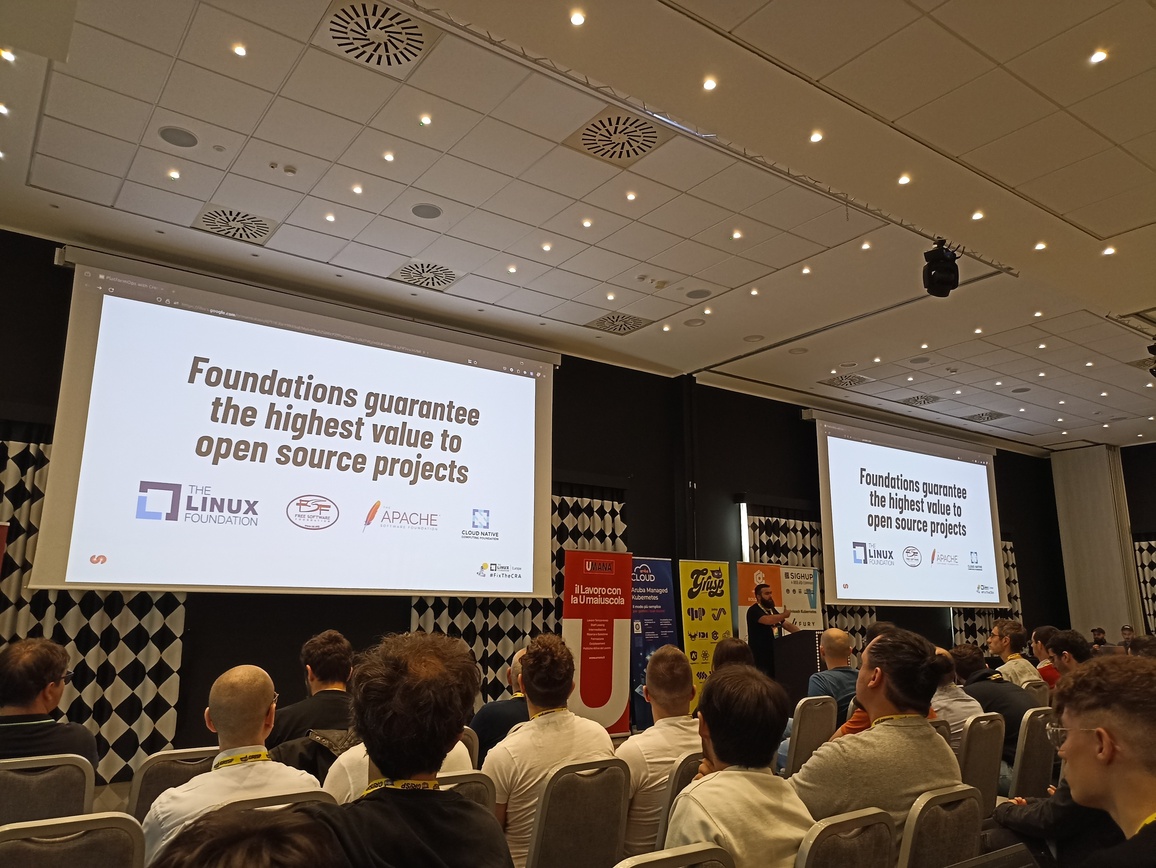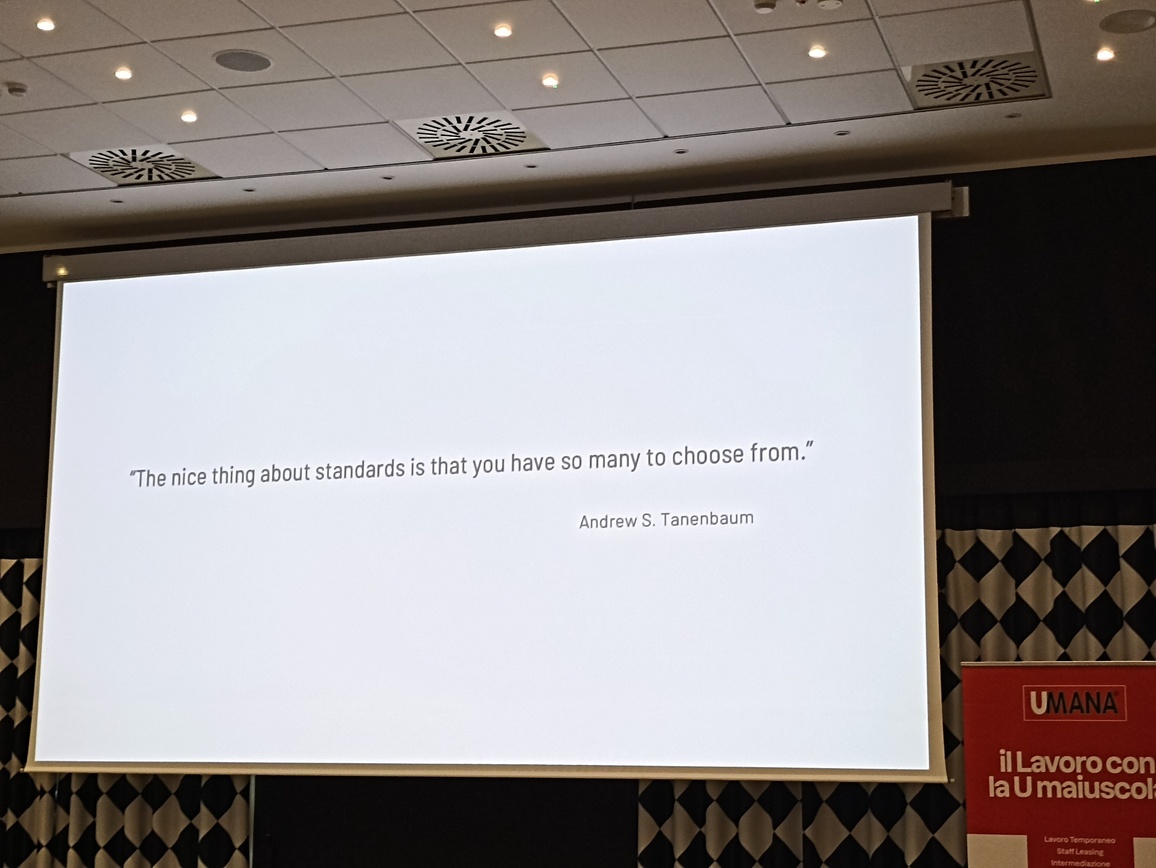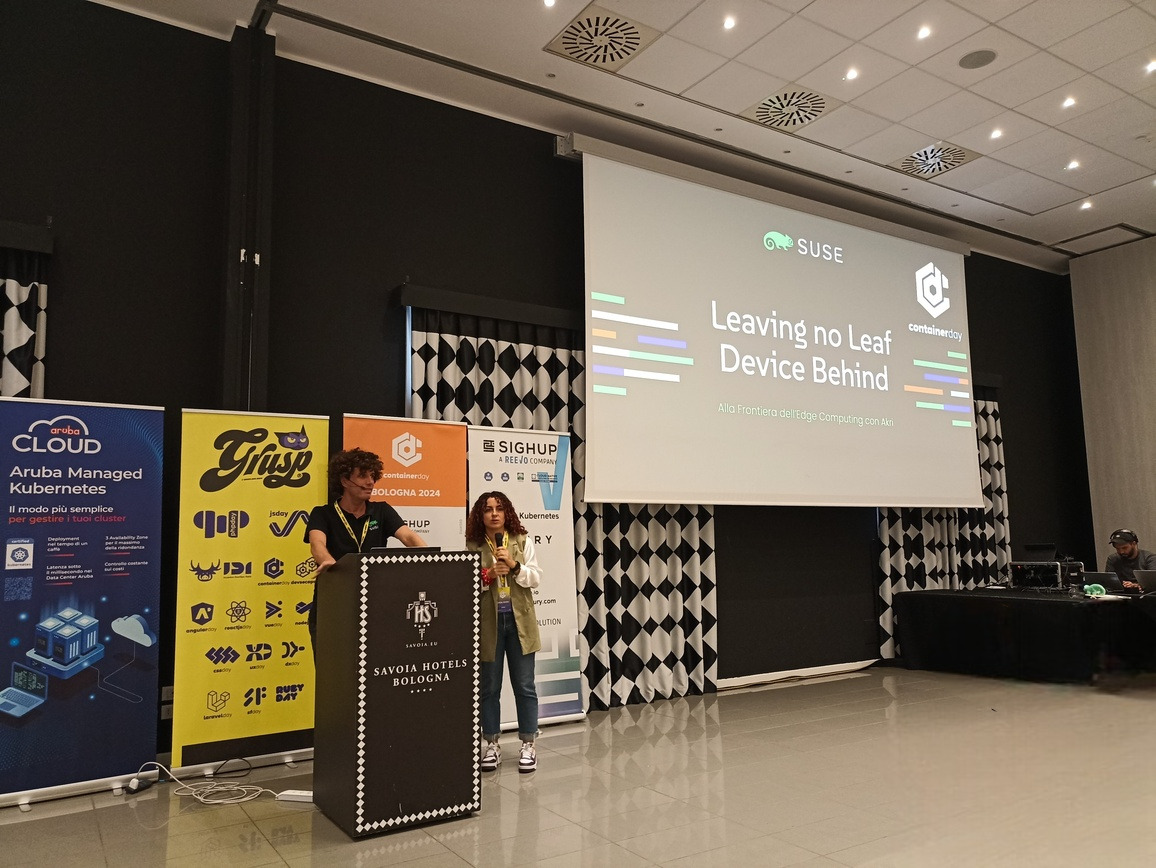Intro
Italian Container Day is an annual conference organized by GRUSP with focus on cloud native / container technologies, devops tools and best practices. The location choosen for this year was a nice Hotel in Bologna, a good choice and also very accessible (thanks to nearby highways and railway connections) part of Italy.

The schedule
- Intro by GrUSP
- Navigating the CNCF Landscape, one step at a time (Sara Trappetti, Michel Murabito)
- PlatformOps with Crossplane: how to build your next-gen Kubernetes-based platform (Daniele Monti)
- Introduction of logs in OpenTelemetry: features and opportunities (Martino Fornasa)
- My first monitoring with EBPF (Gabriele Santomaggio)
- Reimagine the Multi-Cluster (Francesco Torta, Guido Ricioppo)
- .Net Aspire - how to develop and forget about container (Mattia Muraro)
- Improve your container management with Event-Driven Ansible (Fabio Alessandro Locati)
- Leaving no Leaf Device Behind: at the Edge Computing frontier with Akri (Luca Barzè)
- Containers: the last opportunity to make reproducible AI (Marco Franzon)
- 👋 Conference closing

Some Personal Highlights
Monitoring with eBPF: A Game-Changer in Observability One of the standout presentations was “My first monitoring with eBPF” by Gabriele Santomaggio. This talk illuminated the power of eBPF (extended Berkeley Packet Filter) in revolutionizing how we approach system monitoring and observability. Key points:
- eBPF’s ability to provide deep insights into kernel-level operations
- How it enables real-time, low-overhead monitoring
- Practical applications in performance tuning and security
PlatformOps with Crossplane: Building Next-Gen Kubernetes Platforms Daniele Monti’s presentation on “PlatformOps with Crossplane” was another highlight. He explained on how Crossplane is changing the game in Kubernetes-based platform engineering. Takeaways:
- Crossplane’s role in abstracting complex infrastructure
- How it enables a more declarative approach to multi-cloud resource management
- The potential for streamlining DevOps workflows

.NET Aspire: Simplifying Container Development Mattia Muraro’s talk on “.NET Aspire - how to develop and forget about containers” was eye-opening. It showcased Microsoft’s latest efforts to simplify cloud-native development for .NET developers. Insights:
- Aspire’s approach to abstracting away container complexities
- How it integrates with existing .NET ecosystems
- Potential impact on developer productivity and application scalability
Edge Computing Frontiers with Akri Luca Barzè’s presentation, “Leaving no Leaf Device Behind: at the Edge Computing frontier with Akri,” was particularly intriguing. It highlighted the growing importance of edge computing in IoT and distributed systems. Key points:
- Akri’s role in discovering and utilizing edge devices
- How it bridges the gap between Kubernetes and the edge
- Potential applications in IoT, industrial automation, and more

Takeaways
While the technical presentations were invaluable, and the variety of topics discussed put in evidence the fast pace of innovation in cloud native tech, the conference offered much more than just structured learning. It was a good occasion of networking and knowledge exchange. I got the chance to reconnect with familiar industry faces, and meet new professional people of the field. Both speakers and attendees shown an incredible passion and expertise. These personal interactions and shared moments of discovery were, in many ways, the heart of the conference experience.
Last but not least, kudos to the organizers for the interactive QR code system: each presentation featured a QR code linking to a dedicated website for real-time questions and feedback. This innovative approach streamlined Q&A sessions (both from local and remote attendees), enhanced audience engagement, and accommodated preferences for written communication, demonstrating the conference’s effective use of technology to improve learning outcomes.
Notably, SUSE was one of the sponsors so I had the chance to meet some colleagues at the company booth 🤓
